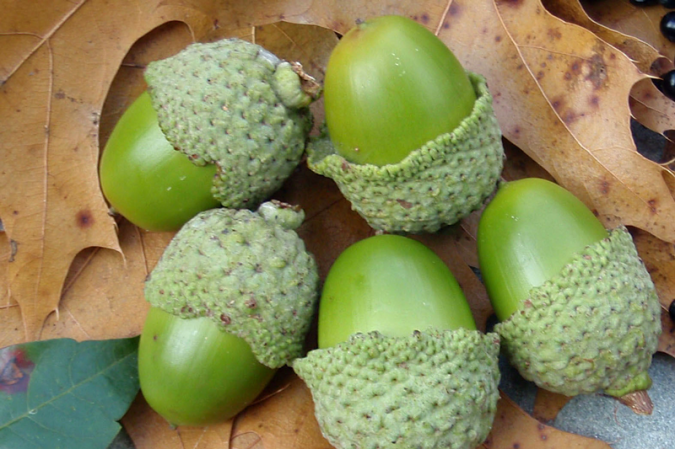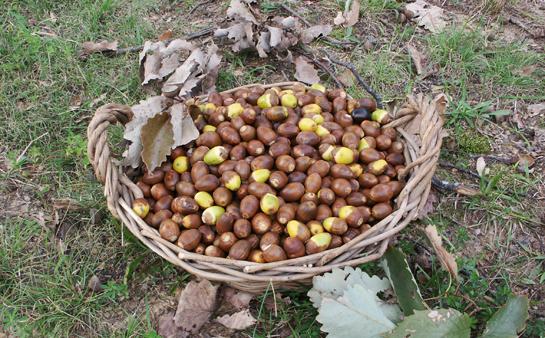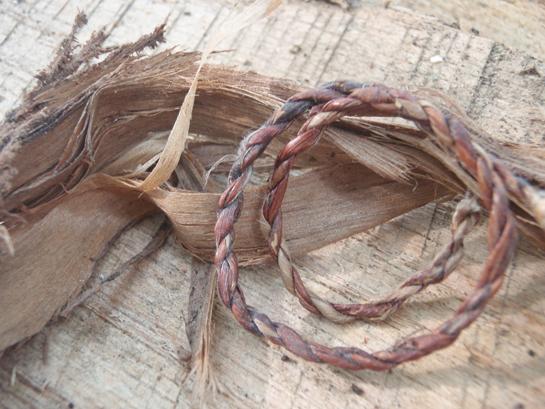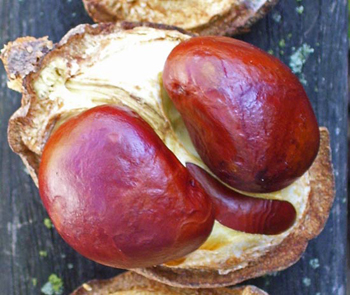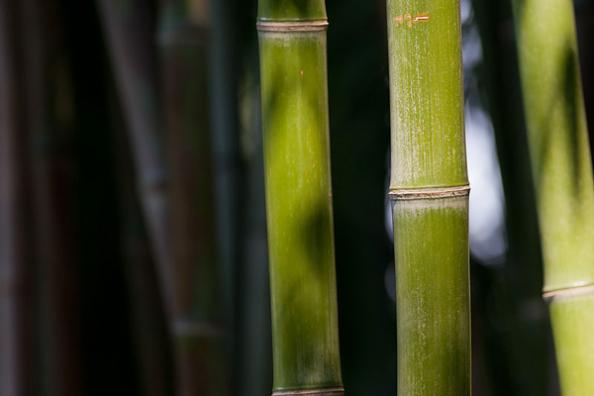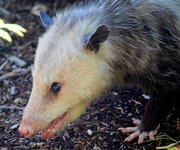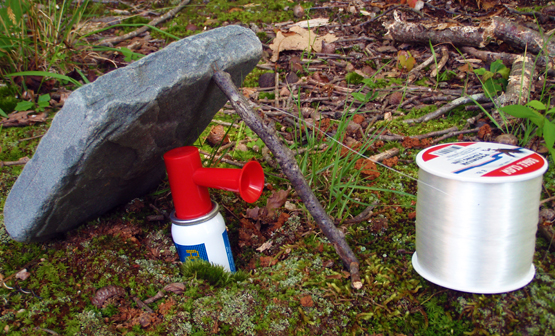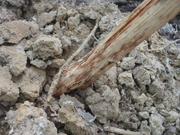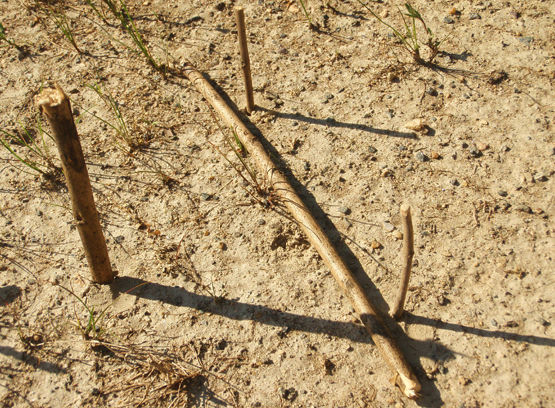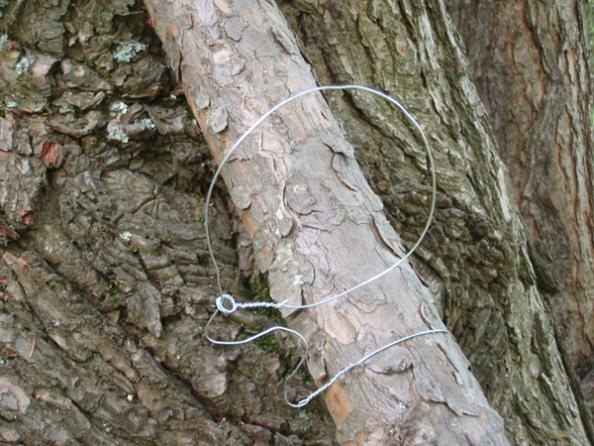There are more than 600 species of oaks found growing around the world, and every one of them produces acorns. Acorns are different from other tree nuts because of their interesting two-part shell. The nuts have a smooth shell that is held inside a second cup-like shell called a “cupule.” This “shell and cap” structure is much different from other tree nuts like hickory and walnut, whose inner nut shells are surrounded by outer husks. Acorn cups (or caps) can have very different sizes, shapes, and textures, based upon the species. Some of them are shallow, covering very little of the nut’s shell. Other kinds of caps cover half of the shell, and some almost surround it.
All oak acorns are edible, and they all contain some degree of tannic acid. This bitter substance can (and should) be soaked out in water, using various techniques. Some species produce huge acorns with low levels of tannic acid, while others grow tiny acorns that are loaded with it. While tannic acid has some outstanding medicinal benefits for topical problems, it’s an irritant to the GI tract. Consumption of tannic acid can cause nausea, diarrhea, constipation, and in extreme cases, intestinal bleeding.
Remove The Shells (and the Bitterness)
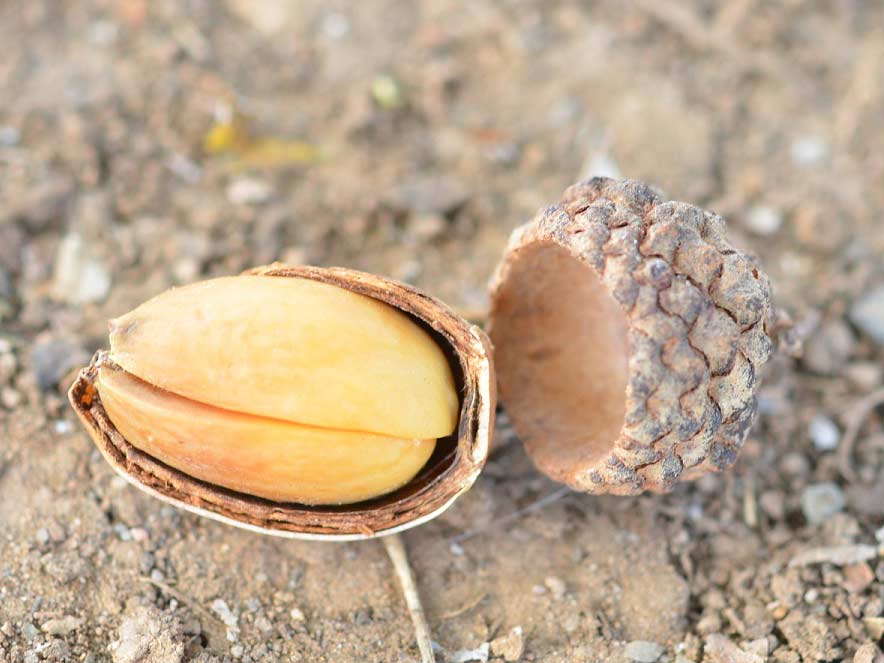
Growing up, my family had always said that acorns were poisonous, though this was probably due more to someone’s tasting of a raw acorn (and subsequently spitting it out) than any real heath threats. In fact, acorns are perfectly safe for those who don’t have an acorn/nut allergy, and they are listed as edible in all the survival guides. You just have to get rid of the tannic acid, which may be abundant or light – depending on species and growing conditions. Luckily, tannic acid is water-soluble, and we can remove it with a soaking technique that most people call “leaching.” Here’s the basic process:
Step 1 – Use rocks or a wide hammer to break the acorns open and crack the nut meat into pieces. Once smashed, separate the shell from the actual nut pieces. This is necessary for soaking since the shells are waterproof.
Step 2 – Drop the nut pieces into a pot of water, and use twice as much water as acorns. Hot water will leach out the acid faster.
Step 3 – Let the acorns sit in their bath for a few hours. Pour off the first batch of tea-colored water, and save for medicinal purposes. Taste test a larger nut chunk, and determine if more soakings are required (they usually are).
Step 4 – When you’ve soaked the acorns in enough batches of water that they have become bland, you’re done with leaching. Dry them out or use them wet for various food dishes, drinks, and snacks.
Roast Them For Flavor
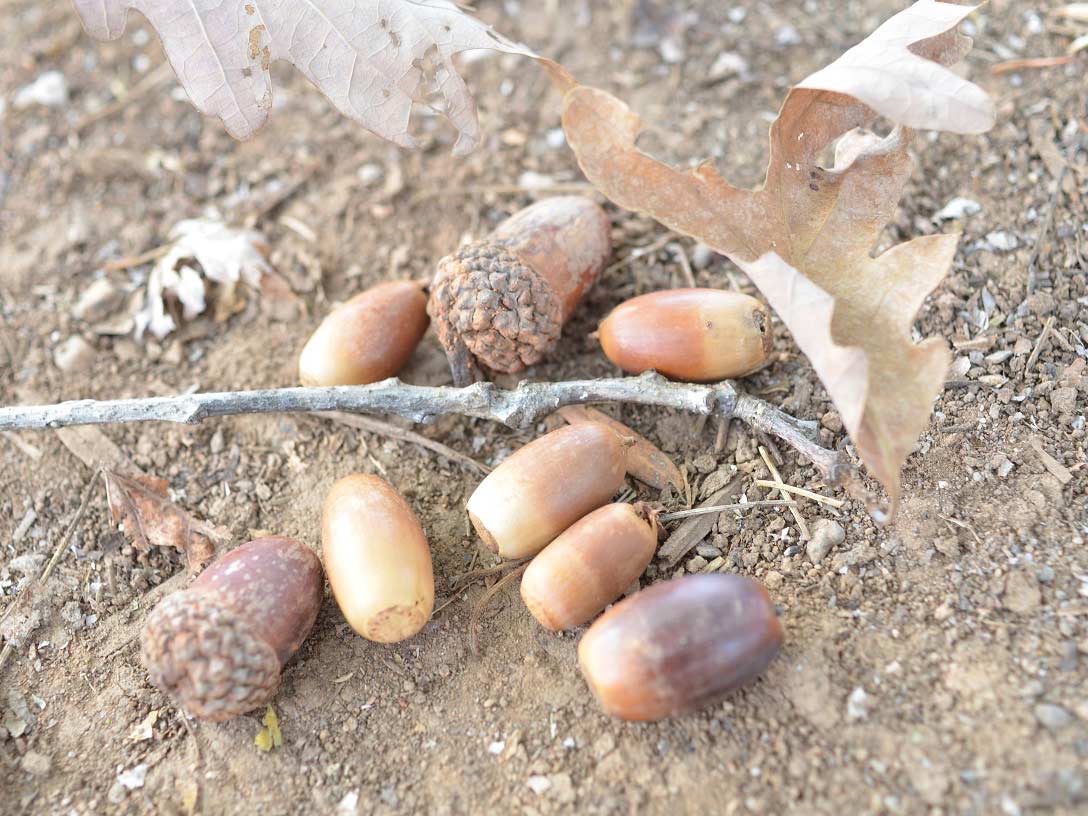
Since acorns generally only have two flavors (horrible and bland), roasting these nutritious nuts can add some much-needed dimension to their flavor. Roasting is also one of your easier options for preparation. Over the campfire, move around some broken and leached acorn chunks in a greased skillet. Once they pick up some color (and some grease), salt them and dig in. At home, make one layer of leached acorn chunks on a baking sheet (it’s okay if they are still damp from leaching), and sprinkle them with fine salt. Bake for roughly 15 minutes at 375 degrees F, or until they start to brown a little. However you cook them, once they’ve changed color a little and gained a roasted smell, they’re ready to eat.
Grind Your Own Flour
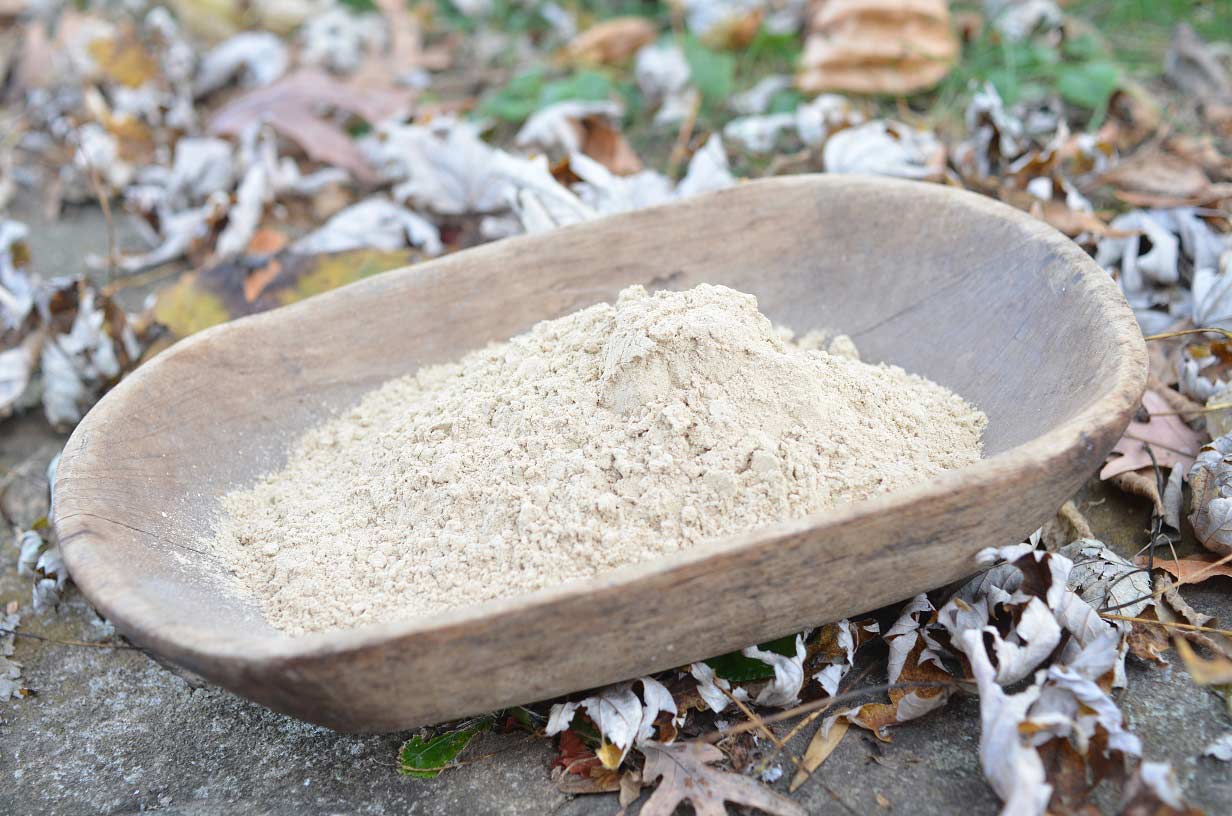
Once you’ve gotten rid of enough of the bitter and astringent tannic acid to make the acorns palatable, you can jump right into flour making. Acorn chunks aren’t easy to grind when they are soaking wet from their final leaching, so you’ll want to dry them out until they can be ground into flour without creating a paste. You can do your grinding between two rocks, in a blender, a food processor, or in a traditional flour grinder. Acorn flour is even gluten-free.
Once your flour is ground, you can start cooking with it immediately or freeze it for storage. Once frozen, there’s no way for the acorn flour to mold or go rancid. If freezing isn’t an option, dry the acorn flour (in the sunshine with low humidity is ideal), and store it in a cloth or paper bag so it can breathe. Check it often for mold and insect larvae.
Read Next: How tot Grind Acorns into Flour and Make Pancakes
6. Simmer An Acorn Porridge
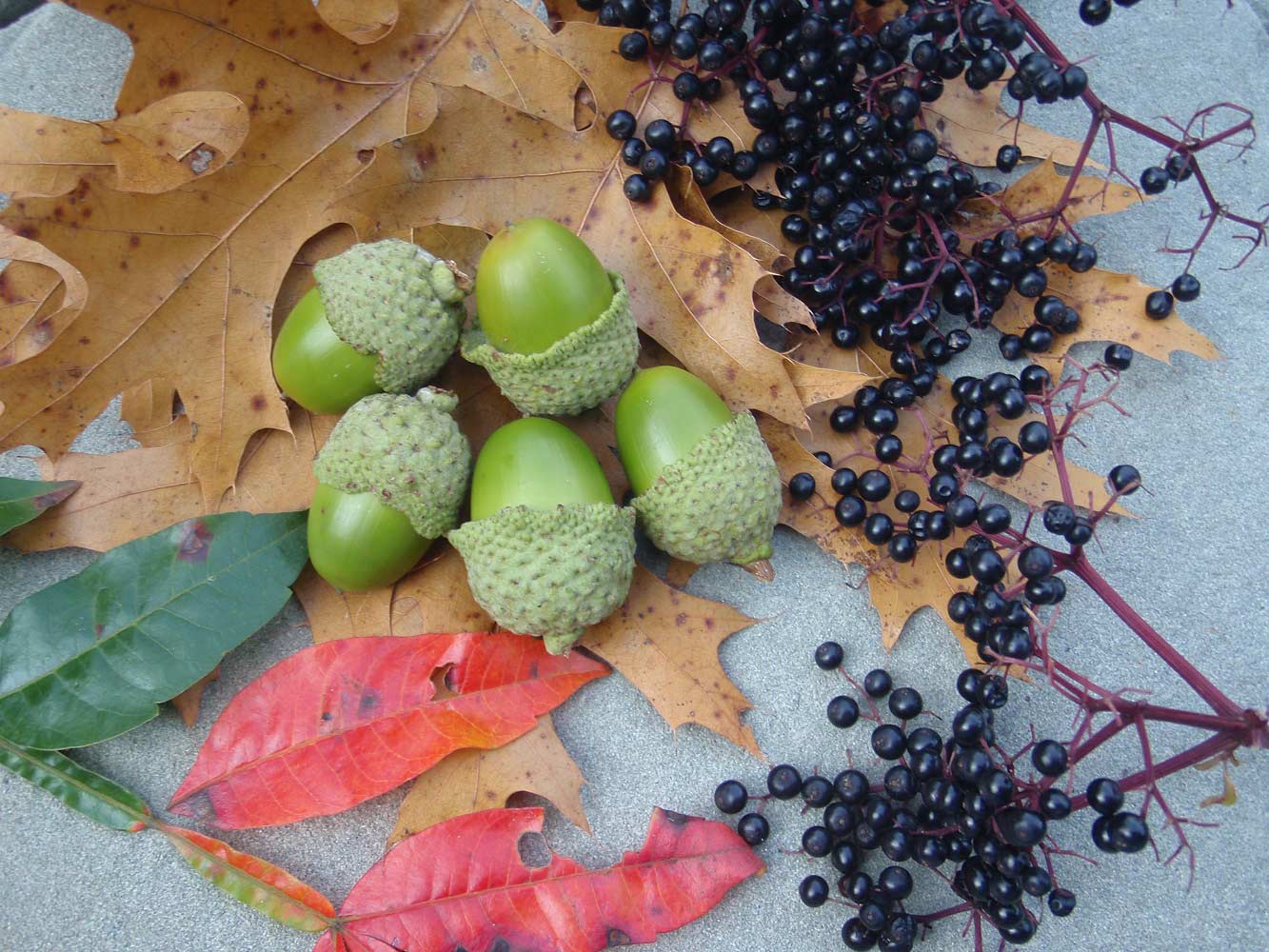
While acorn mush looks more like granular mud than food, this simple porridge has been a staple food for our ancestors around the globe. To make your own mush, combine equal volumes of acorn flour and boiling water in a pot, over medium heat or a low fire. Slowly add a little more water and simmer for a few minutes until you reach your preferred consistency (which can be watery like a soup or thicker than oatmeal). If you want to go with a traditional sweetener, there’s nothing finer than maple syrup. You can also add sweet berries to the mixture. To add a spicy dimension, try adding dried spicebush (Lindera benzoin) or some other native plant seasoning. Or you could go really old-school with your mush and add red meat, fowl, or fish to the pot (a traditional Native American pairing). Acorns do bring some fat and protein to the table, but of course, the meat will bring even more. For my tastes though, edible tree nuts like walnuts and hickory are a better match as a protein booster in your tree porridge. However you eat it, this traditional dish has been served around the Northern Hemisphere for thousands of years.
Make Acorn Coffee
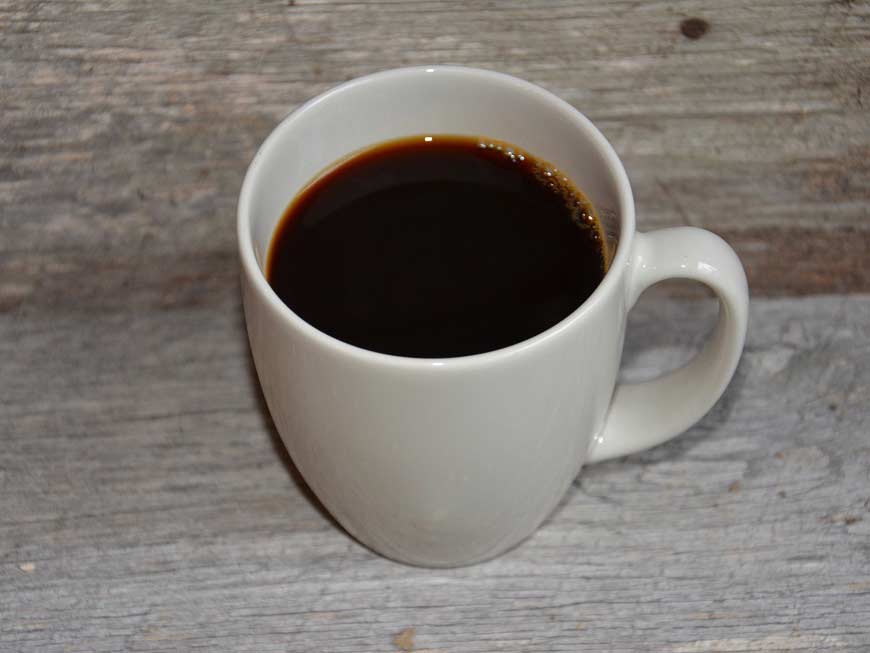
Despite the fact that acorns don’t contain any caffeine, these tree nuts can still yield a coffee-like beverage after a little roasting. When making acorn coffee at home, place one layer of leached acorn chunks (small bits, but not flour) on a cookie sheet or cast-iron skillet and set them in the oven at 350 degrees F for half an hour or until the acorn chunks are dark brown (almost burnt). Over the campfire, you could still use your cast iron skillet or a Dutch oven to hold your acorn chunks, and set the vessel on a bed of coals. Stir frequently and remove them from the heat before they burn. Once the chunks have roasted, you can brew your coffee alternative. Add one tablespoon of roasted acorn chunks to a cup of scalding hot water. Allow the drink to soak for fifteen minutes, sweeten, and enjoy.
4. Bake an Acorn Cake
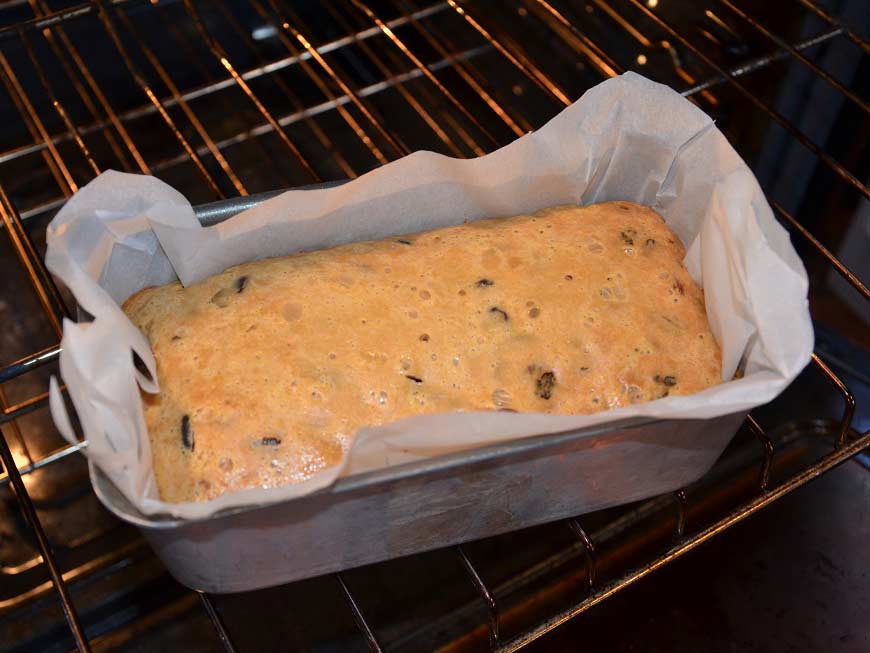
My wife developed this recipe for our foraging classes almost 20 years ago, and students still ask for the recipe.
Acorn Pumpkin Cake
- 4 eggs
- 2 cups of sugar
- 1 cup of vegetable oil
- 1 cup of acorn flour
- 1 cup of all-purpose flour
- 2 teaspoons of cinnamon
- ½ teaspoon of nutmeg
- ½ teaspoon of ground cloves
- 1 teaspoon each of baking soda and baking powder
- 1 cup of raisins
- 1 teaspoon of salt
- 1 can of cooked pumpkin or 15-ounce equivalent
Put the eggs, sugar, and oil into a large bowl and mix well. In a separate bowl, sift all the dry ingredients together and mix them well. Add the dry ingredients to the wet mixture, and mix well. Now finally add the 15 ounces of cooked pumpkin and mix well again. Line two loaf pans with parchment paper (or grease and flour a single Bundt pan), and pour in the mixture. Bake at 350 degrees F for about 45 minutes, or until a toothpick stuck into the bread comes out clean. Start checking with toothpicks at 35 minutes. Cool and enjoy this dense dessert bread.
3. Create Candied Acorns
If you’ve got an insatiable sweet tooth like me, you’re looking for a way to make these nuts sweet. Start by tweaking a typical peanut brittle recipe and swapping acorns for peanuts. Assemble the following:
- Nonstick cooking spray
- 1 cup of sugar
- ½ cup of light corn syrup
- 1 cup of leached acorn chunks
- 2 tablespoons of unsalted butter
- 1 teaspoon of kosher salt
- ¾ teaspoon of baking soda
- ⅛ teaspoon of ground cinnamon
- ¼ teaspoon of flaky sea salt
- You’ll also need a candy thermometer, some parchment paper, a baking sheet, and a saucepan.
Place your parchment paper on a baking sheet and mist with nonstick cooking spray. Combine your sugar, corn syrup, and 3 tablespoons of water in your saucepan. Bring to a boil over medium heat and stir. Attach the candy thermometer and cook until it reads 290 degrees F, this takes roughly 3 to 4 minutes. Add your acorn chunks, butter, and kosher salt. Stir often, until the mixture is pale brown and the thermometer registers 305 degrees F. Stir in the baking soda and cinnamon (the baking soda will make it bubble), and pour the bubbling mixture onto your prepared parchment sheet. Spread if necessary with a spatula or large spoon, season with sea salt, and allow it to cool completely. Break your acorn brittle into pieces and enjoy.
2. Try Some Cookies
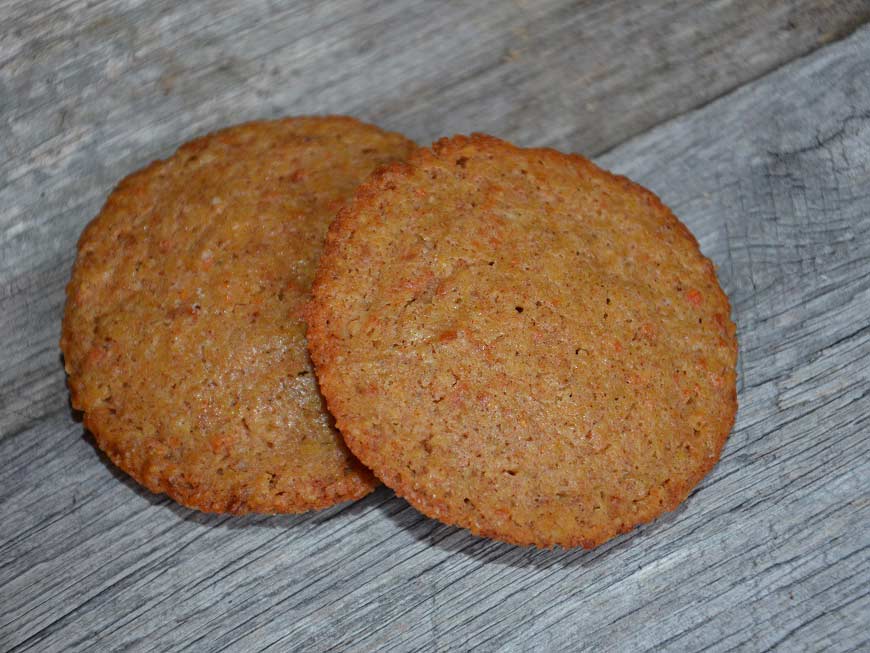
You could follow any cookie recipe, swapping out the wheat flour for acorn flour, but this one is our family favorite. Since acorn flour is more crumbly than wheat flour, cookies are a natural fit for this wild food. To make them, gather the following ingredients:
- 3 cups of acorn flour
- ½ teaspoon of salt
- 1 cup of butter
- 1 cup of brown sugar
- 1 cup of peanut butter
- ½ teaspoon of baking soda
- 1 cup of white sugar
- 2 teaspoons of Vanilla
- 2 eggs
The butter will cooperate better if it softens up to room temperature before mixing, so set the butter out first. Mix the flour, salt, and baking soda in a small bowl and set it aside. Then, mix the softened butter and peanut butter in a large bowl. Add the vanilla and both sugars to the butter mixture and mix it well. Add the eggs and mix again. Stir in the flour mixture into the butter mixture until smooth. Roll the dough into balls and pat out onto an ungreased baking pan. Bake at 375 degrees F for 10 minutes or until lightly brown. The batch makes 4 to 5 dozen cookies.
1. Heal Up With An Acorn Concoction
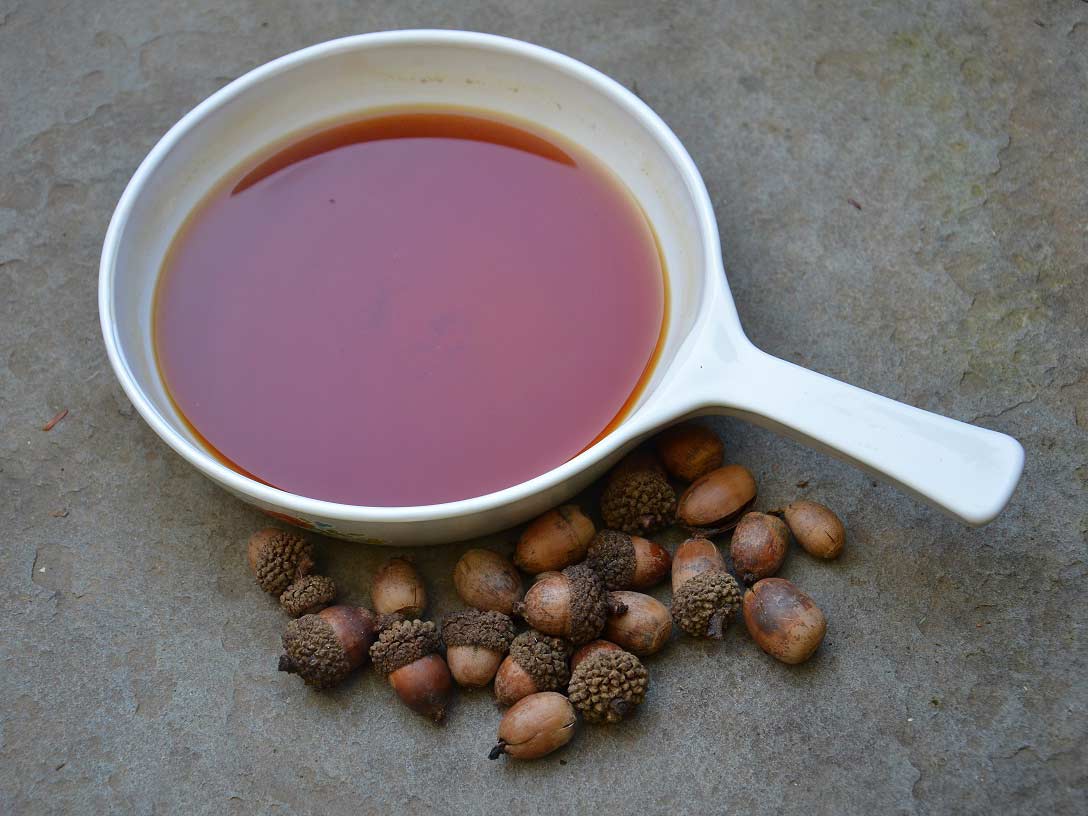
Even though this might sound like some kind of potion, this acorn brew is an excellent remedy for topical issues like skin irritation, and it can even help with toothaches. It’s easy to come by, too. Just save the first batch of water you pour off your leached acorns. As long as the water is brown, it has enough tannic acid to assist in the healing of skin issues. For a stronger batch, crush and boil some acorns with the shells in enough water to cover them.
To use it on your skin, pour some of the dark brown water onto a clean cloth and apply it as a compress (hot or cold) to the affected area. It’s a great treatment for all kinds of rashes (fungal, bacterial, and contact dermatitis). It’s also useful for healing ingrown toenails, hemorrhoids, and any other inflamed skin ailment. Just leave the wet cloth in place for a few hours, or overnight and repeat as needed. And for a toothache in the field, use this bitter water as a mouthwash—holding it as long as you can stand it. Try not to swallow any, as tannic acid can cause nausea and digestive distress. Repeat as needed.

